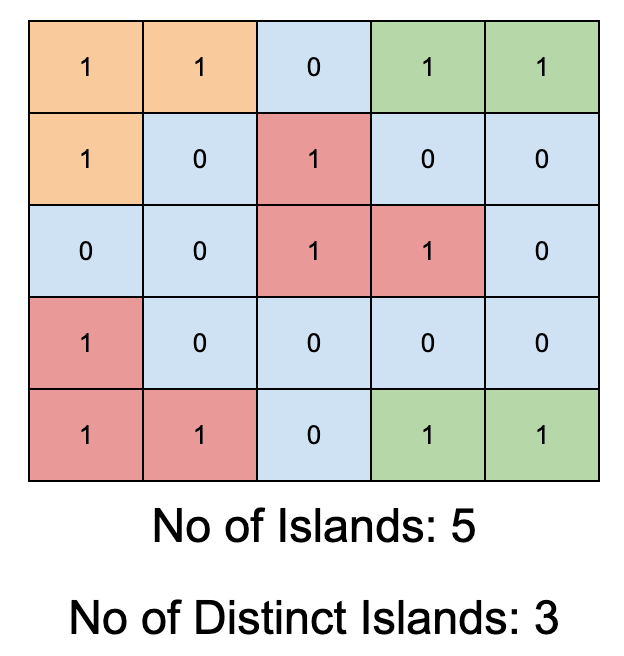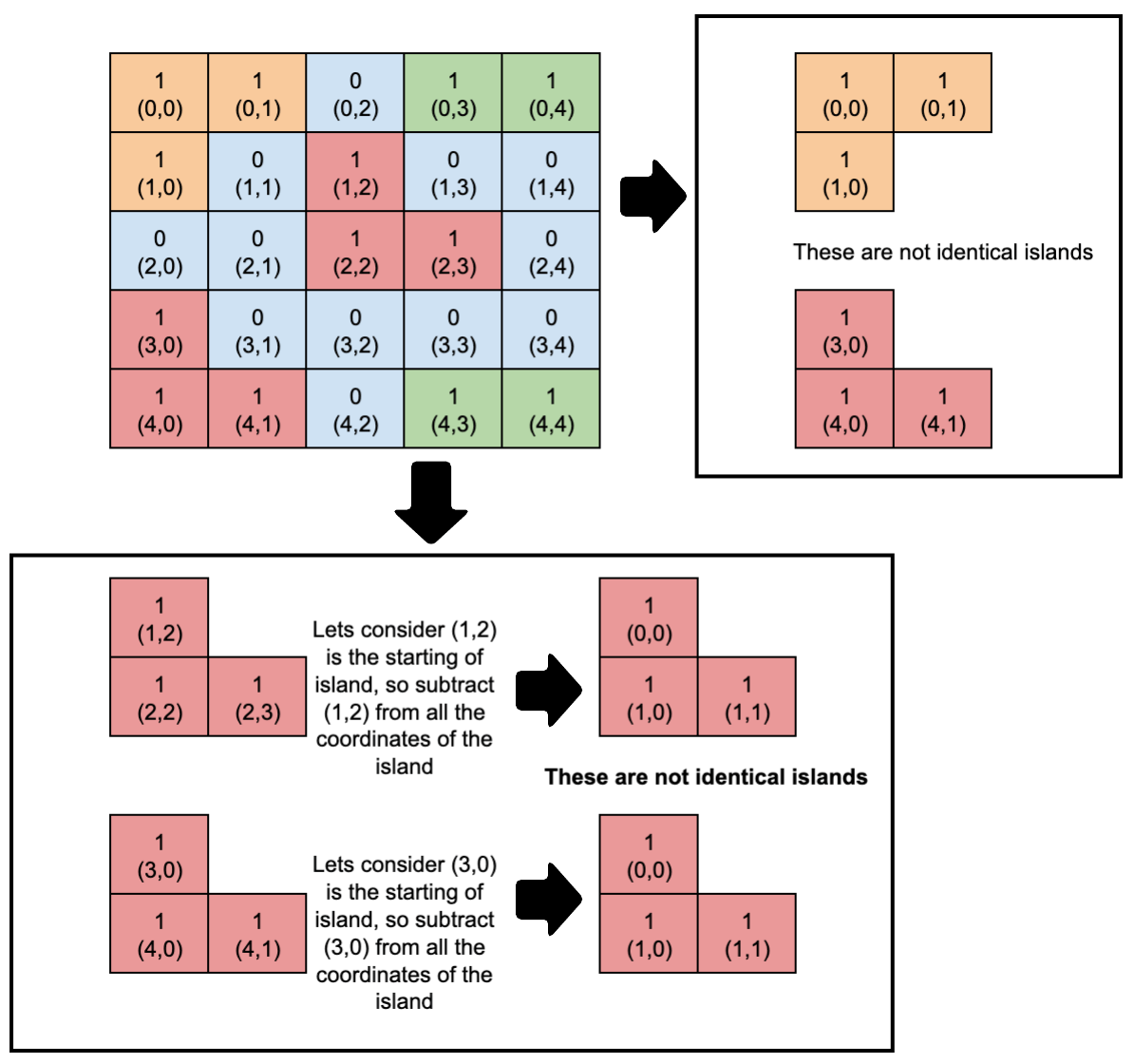|
This post is completed by 1 user
|
Add to List |
442. Find the number of distinct Islands OR connected components.
Objective: Given a 2d grid map of '1's (land) and '0's (water), count the number of distinct or unique islands.
Island: An island is surrounded by water and is formed by connecting adjacent lands horizontally or vertically. Assume all four edges of the grid are all surrounded by water. Given such a grid, write an algorithm to find the number of distinct islands in it.
This problem can also be also as find the number of distinct or unique connected components in the given graph.

Example:
Example 1: Input: 11110 11010 11000 00000 No of distinct Islands: 1 Example 2: Input: 11000 11011 00100 00011 No of distinct Islands: 2 Example 3: Input: 11011 10100 00110 10000 11011 No of distinct Islands: 3
Approach:
Earlier we have seen the problem - Find the number of islands. In that problem, the objective was to find the total number of islands in the grid. Finding distinct islands can be considered an extension of that problem. We will use the same approach with some modifications.
Use Depth-First Search
If all the nodes in the grid are connected then after DFS all the nodes will be visited and there will be only one Island in the grid. If there are more islands in the grid we need to multiple DFS to visit them all. So Number of Islands will be equal to the number of DFS required to visit all isLands (1's)
How to determine if two islands are identical: If coordinates in two islands form an identical shape or structure. The coordinates of both the islands can be at a different location. See the example below

Steps:
- Start the DFS from the node with value 1 (consider this node as start node of the island, store its coordinates in (start_x, start_y)) will be and try all four directions (right, left, up and down) to find any connected node with 1's (let's say connected node coordinates are (x, y)). Calculate its new coordinates with reference to start node as new_x = x-start_x, new_y=y-start_y and store it in list. Once DFS is completed, means we have found an island and all the calculated coordinates are stored in the list.
- Start another DFS from an unvisited node with value 1 (if exists) and once this DFS is completed, coordinates for this island will be stored in the separate list.
- Put all these lists into Set, this will remove the duplicates and will have unique islands in the Set.
- Once all the nodes are visited, the size of Set will be our answer. (distinct islands).
Output
No of unique distinct islands are: 3

